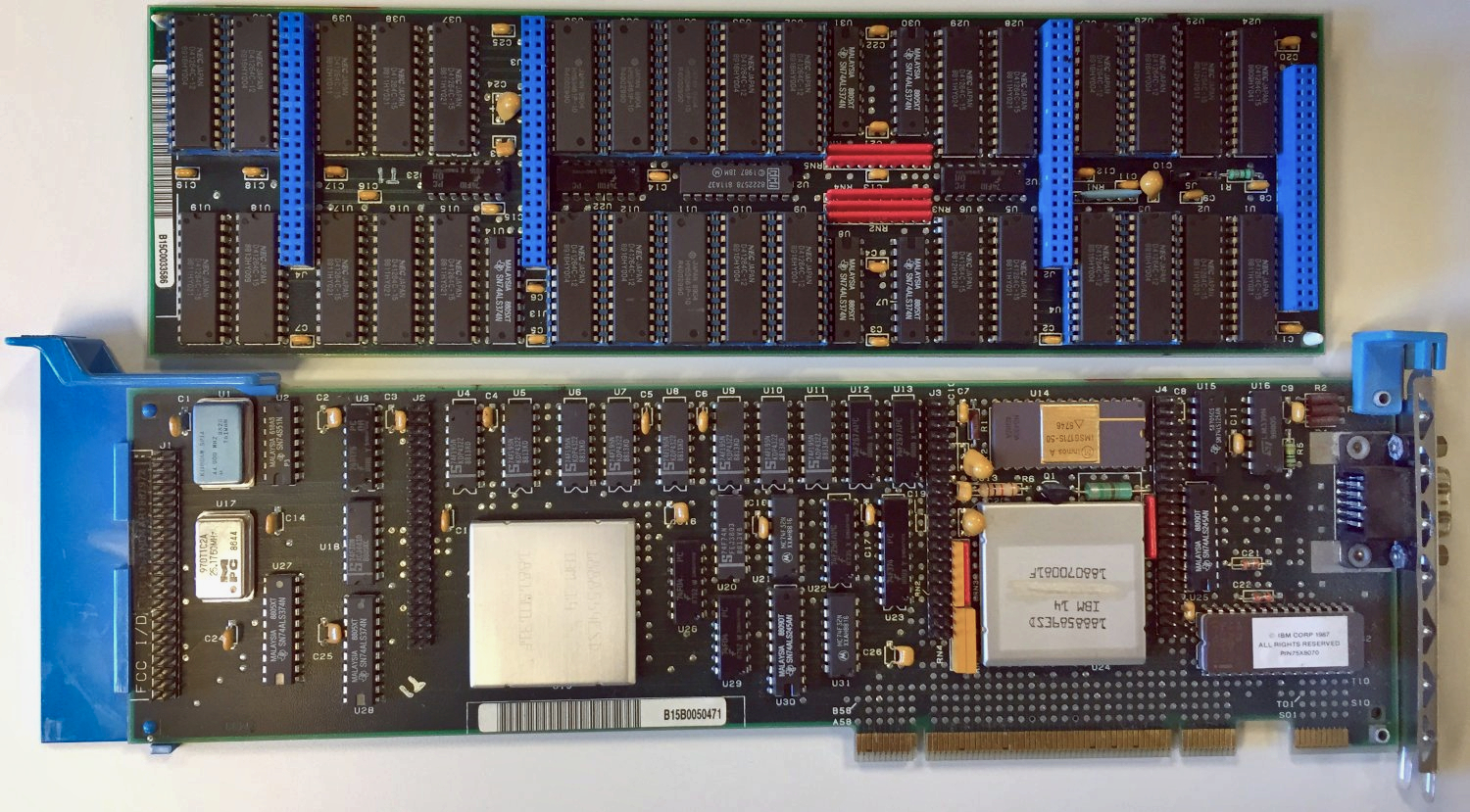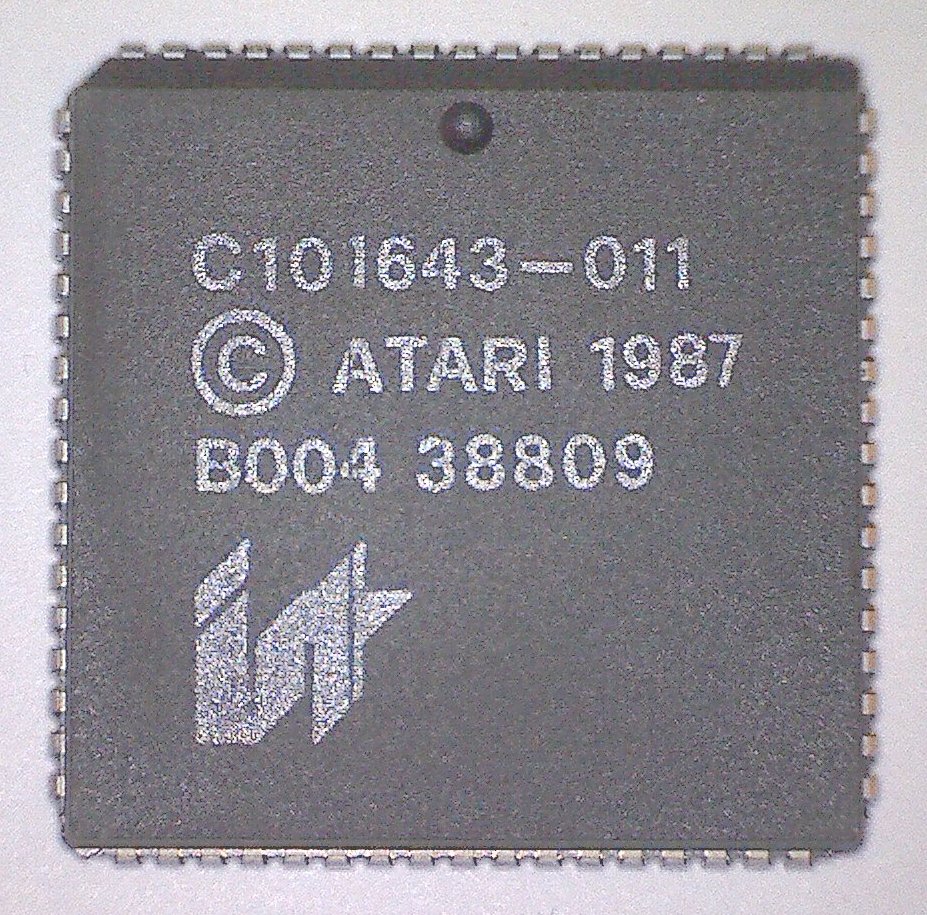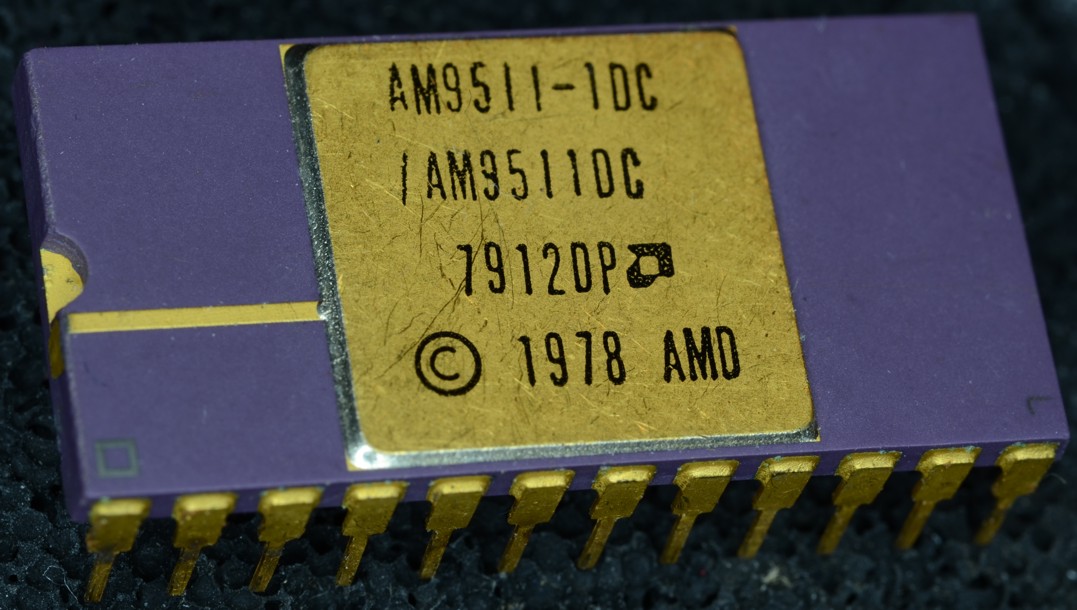|
IBM 8514
IBM 8514 is a graphics card manufactured by IBM and introduced with the IBM PS/2 line of personal computers in 1987. It supports a display resolution of pixels with 256 colors at 43.5 Hz (interlaced), or at 60 Hz ( non-interlaced). 8514 usually refers to the display controller hardware (such as the 8514/A display adapter). However, IBM sold the companion CRT monitor (for use with the 8514/A) which carries the same designation, 8514. The 8514 uses a standardised programming interface called the "Adapter Interface" or AI. This interface is also used by XGA, IBM Image Adapter/A, and clones of the 8514/A and XGA such as the ATI Technologies Mach 32 and IIT AGX. The interface allows computer software to offload common 2D-drawing operations ( line-draw, color-fill, and block copies via a blitter) onto the 8514 hardware. This frees the host CPU for other tasks, and greatly improves the speed of redrawing a graphics visual (such as a pie-chart or CAD-illustration). ... [...More Info...] [...Related Items...] OR: [Wikipedia] [Google] [Baidu] |
IBM 8514
IBM 8514 is a graphics card manufactured by IBM and introduced with the IBM PS/2 line of personal computers in 1987. It supports a display resolution of pixels with 256 colors at 43.5 Hz (interlaced), or at 60 Hz ( non-interlaced). 8514 usually refers to the display controller hardware (such as the 8514/A display adapter). However, IBM sold the companion CRT monitor (for use with the 8514/A) which carries the same designation, 8514. The 8514 uses a standardised programming interface called the "Adapter Interface" or AI. This interface is also used by XGA, IBM Image Adapter/A, and clones of the 8514/A and XGA such as the ATI Technologies Mach 32 and IIT AGX. The interface allows computer software to offload common 2D-drawing operations ( line-draw, color-fill, and block copies via a blitter) onto the 8514 hardware. This frees the host CPU for other tasks, and greatly improves the speed of redrawing a graphics visual (such as a pie-chart or CAD-illustration). ... [...More Info...] [...Related Items...] OR: [Wikipedia] [Google] [Baidu] |
Blitter
A blitter is a circuit, sometimes as a coprocessor or a logic block on a microprocessor, dedicated to the rapid movement and modification of data within a computer's memory. A blitter can copy large quantities of data from one memory area to another relatively quickly, and in parallel with the CPU, while freeing up the CPU's more complex capabilities for other operations. A typical use for a blitter is the movement of a bitmap, such as windows and fonts in a graphical user interface or images and backgrounds in a 2D video game. The name comes from the bit blit operation of the 1973 Xerox Alto, which stands for bit-block transfer. A blit operation is more than a memory copy, because it can involve data that's not byte aligned (hence the ''bit'' in ''bit blit''), handling transparent pixels (pixels which should not overwrite the destination), and various ways of combining the source and destination data. Blitters have largely been superseded by programmable graphics processing uni ... [...More Info...] [...Related Items...] OR: [Wikipedia] [Google] [Baidu] |
Digital Signal Processor
A digital signal processor (DSP) is a specialized microprocessor chip, with its architecture optimized for the operational needs of digital signal processing. DSPs are fabricated on MOS integrated circuit chips. They are widely used in audio signal processing, telecommunications, digital image processing, radar, sonar and speech recognition systems, and in common consumer electronic devices such as mobile phones, disk drives and high-definition television (HDTV) products. The goal of a DSP is usually to measure, filter or compress continuous real-world analog signals. Most general-purpose microprocessors can also execute digital signal processing algorithms successfully, but may not be able to keep up with such processing continuously in real-time. Also, dedicated DSPs usually have better power efficiency, thus they are more suitable in portable devices such as mobile phones because of power consumption constraints. DSPs often use special memory architectures that are able t ... [...More Info...] [...Related Items...] OR: [Wikipedia] [Google] [Baidu] |
Truevision TGA
Truevision TGA, often referred to as TARGA, is a raster graphics file format created by Truevision Inc. (now part of Avid Technology). It was the native format of TARGA and VISTA boards, which were the first graphic cards for IBM-compatible PCs to support Highcolor/ truecolor display. This family of graphic cards was intended for professional computer image synthesis and video editing with PCs; for this reason, usual resolutions of TGA image files match those of the NTSC and PAL video formats. TARGA is an acronym for '' Truevision Advanced Raster Graphics Adapter''; ''TGA'' is an initialism for '' Truevision Graphics Adapter''. TGA files commonly have the extension ".tga" on PC DOS/Windows systems and macOS (older Macintosh systems use the "TPIC" type code). The format itself permits any pixel bit depth up to 255, of which up to 15 bits can be dedicated to an alpha channel; however, the only bit depths supported in practice were 8, 15, 16, 24, or 32, where the 16 and 32-bit ... [...More Info...] [...Related Items...] OR: [Wikipedia] [Google] [Baidu] |
Coprocessor
A coprocessor is a computer processor used to supplement the functions of the primary processor (the CPU). Operations performed by the coprocessor may be floating-point arithmetic, graphics, signal processing, string processing, cryptography or I/O interfacing with peripheral devices. By offloading processor-intensive tasks from the main processor, coprocessors can accelerate system performance. Coprocessors allow a line of computers to be customized, so that customers who do not need the extra performance do not need to pay for it. Functionality Coprocessors vary in their degree of autonomy. Some (such as FPUs) rely on direct control via coprocessor instructions, embedded in the CPU's instruction stream. Others are independent processors in their own right, capable of working asynchronously; they are still not optimized for general-purpose code, or they are incapable of it due to a limited instruction set focused on accelerating specific tasks. It is common for these t ... [...More Info...] [...Related Items...] OR: [Wikipedia] [Google] [Baidu] |
Coprocessor
A coprocessor is a computer processor used to supplement the functions of the primary processor (the CPU). Operations performed by the coprocessor may be floating-point arithmetic, graphics, signal processing, string processing, cryptography or I/O interfacing with peripheral devices. By offloading processor-intensive tasks from the main processor, coprocessors can accelerate system performance. Coprocessors allow a line of computers to be customized, so that customers who do not need the extra performance do not need to pay for it. Functionality Coprocessors vary in their degree of autonomy. Some (such as FPUs) rely on direct control via coprocessor instructions, embedded in the CPU's instruction stream. Others are independent processors in their own right, capable of working asynchronously; they are still not optimized for general-purpose code, or they are incapable of it due to a limited instruction set focused on accelerating specific tasks. It is common for these t ... [...More Info...] [...Related Items...] OR: [Wikipedia] [Google] [Baidu] |
Workstation
A workstation is a special computer designed for technical or scientific applications. Intended primarily to be used by a single user, they are commonly connected to a local area network and run multi-user operating systems. The term ''workstation'' has been used loosely to refer to everything from a mainframe computer terminal to a PC connected to a network, but the most common form refers to the class of hardware offered by several current and defunct companies such as Sun Microsystems, Silicon Graphics, Apollo Computer, DEC, HP, NeXT, and IBM which powered the 3D computer graphics revolution of the late 1990s. Workstations offer higher performance than mainstream personal computers, especially in CPU, graphics, memory, and multitasking. Workstations are optimized for the visualization and manipulation of different types of complex data such as 3D mechanical design, engineering simulations like computational fluid dynamics, animation, medical imaging, image rendering, and ... [...More Info...] [...Related Items...] OR: [Wikipedia] [Google] [Baidu] |
Fixed-function
Fixed-function is a term canonically used to contrast 3D graphics APIs and earlier GPUs designed prior to the advent of shader-based 3D graphics APIs and GPU architectures. History Historically fixed-function APIs consisted of a set of function entry points that would approximately or directly map to dedicated logic for their named purpose in GPUs designed to support them. As shader based GPUs and APIs evolved, fixed-function APIs were implemented by graphics driver engineers using the more general purpose shading architecture. This approach served as a segue that would continue providing the fixed-function API abstraction most developers were experienced with while allowing further development and enhancements of the newer shader-based architectures. OpenGL, OpenGL ES and DirectX (Direct3D) are all 3D graphics APIs that went through the transition from the fixed-function programming model to the shader-based programming model. Below is a table of when the transition from fi ... [...More Info...] [...Related Items...] OR: [Wikipedia] [Google] [Baidu] |
Hardware Acceleration
Hardware acceleration is the use of computer hardware designed to perform specific functions more efficiently when compared to software running on a general-purpose central processing unit (CPU). Any transformation of data that can be calculated in software running on a generic CPU can also be calculated in custom-made hardware, or in some mix of both. To perform computing tasks more quickly (or better in some other way), generally one can invest time and money in improving the software, improving the hardware, or both. There are various approaches with advantages and disadvantages in terms of decreased latency, increased throughput and reduced energy consumption. Typical advantages of focusing on software may include more rapid development, lower non-recurring engineering costs, heightened portability, and ease of updating features or patching bugs, at the cost of overhead to compute general operations. Advantages of focusing on hardware may include speedup, reduced pow ... [...More Info...] [...Related Items...] OR: [Wikipedia] [Google] [Baidu] |
IBM Personal System/2
The Personal System/2 or PS/2 is IBM's second generation of personal computers. Released in 1987, it officially replaced the IBM PC, XT, AT, and PC Convertible in IBM's lineup. Many of the PS/2's innovations, such as the 16550 UART (serial port), 1440 KB 3.5-inch floppy disk format, 72-pin SIMMs, the PS/2 port, and the VGA video standard, went on to become standards in the broader PC market. The PS/2 line was created by IBM partly in an attempt to recapture control of the PC market by introducing the advanced yet proprietary Micro Channel architecture (MCA) on higher-end models. These models were in the strange position of being incompatible with the IBM-compatible hardware standards previously established by IBM and adopted in the PC industry. However, IBM's initial PS/2 computers were popular with target market corporate buyers, and by September 1988 IBM reported that it had sold 3 million PS/2 machines. This was only 18 months after the new range had been introduced. Mos ... [...More Info...] [...Related Items...] OR: [Wikipedia] [Google] [Baidu] |
Industry Standard Architecture
Industry Standard Architecture (ISA) is the 16-bit internal bus of IBM PC/AT and similar computers based on the Intel 80286 and its immediate successors during the 1980s. The bus was (largely) backward compatible with the 8-bit bus of the 8088-based IBM PC, including the IBM PC/XT as well as IBM PC compatibles. Originally referred to as the PC bus (8-bit) or AT bus (16-bit), it was also termed ''I/O Channel'' by IBM. The ISA term was coined as a retronym by competing PC-clone manufacturers in the late 1980s or early 1990s as a reaction to IBM attempts to replace the AT-bus with its new and incompatible Micro Channel architecture. The 16-bit ISA bus was also used with 32-bit processors for several years. An attempt to extend it to 32 bits, called Extended Industry Standard Architecture (EISA), was not very successful, however. Later buses such as VESA Local Bus and PCI were used instead, often along with ISA slots on the same mainboard. Derivatives of the AT bus structure ... [...More Info...] [...Related Items...] OR: [Wikipedia] [Google] [Baidu] |
Micro Channel Architecture
Micro Channel architecture, or the Micro Channel bus, is a proprietary 16- or 32-bit parallel computer bus introduced by IBM in 1987 which was used on PS/2 and other computers until the mid-1990s. Its name is commonly abbreviated as "MCA", although not by IBM. In IBM products, it superseded the ISA bus and was itself subsequently superseded by the PCI bus architecture. Background The development of Micro Channel was driven by both technical and business pressures. Technology The IBM AT bus, which later became known as the Industry Standard Architecture (ISA) bus, had a number of technical design limitations, including: * A slow bus speed. * A limited number of interrupts, fixed in hardware. * A limited number of I/O device addresses, also fixed in hardware. * Hardwired and complex configuration with no conflict resolution. * Deep links to the architecture of the 80x86 chip familyUse of the ISA bus outside of machines employing the 80x86 CPU family was rare. Notable non- ... [...More Info...] [...Related Items...] OR: [Wikipedia] [Google] [Baidu] |







